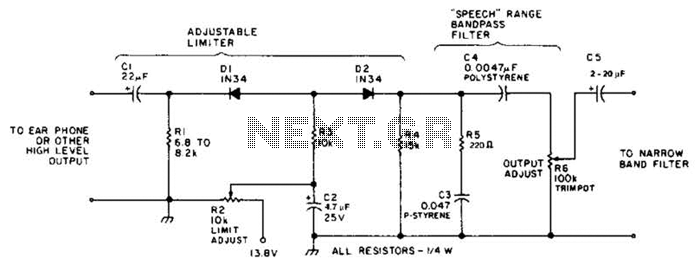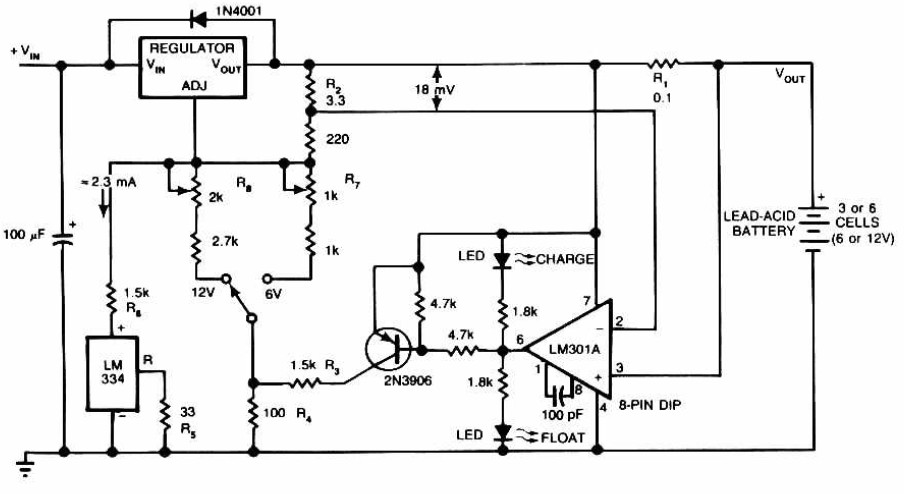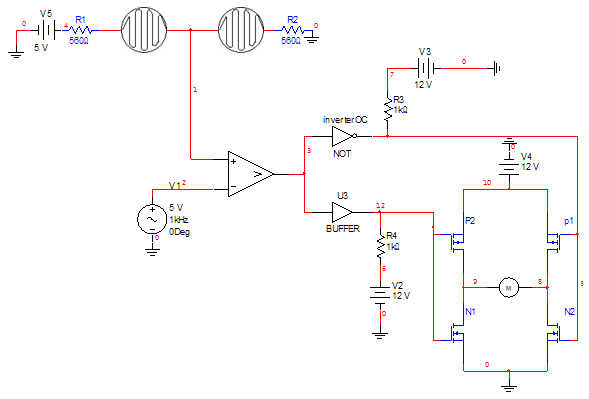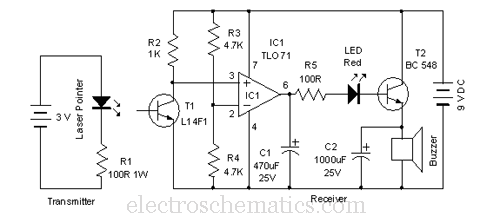
Simple Noise Limiter For Receivers Circuit

This circuit employs a diode series clipper to limit noise peaks on a received signal. It is most effective in scenarios where several volts peak-to-peak of audio signal are present.
The diode series clipper circuit is designed to protect subsequent stages of a signal processing system from excessive voltage spikes that can occur due to noise or other interference. The circuit typically consists of a pair of diodes arranged in series with the input signal, which allows the circuit to "clip" or limit the amplitude of the incoming signal to a predefined level.
In operation, when the input voltage exceeds the forward voltage drop of the diodes, the diodes conduct and shunt the excess voltage to ground, effectively preventing the output voltage from rising above a certain threshold. This action helps to maintain signal integrity by reducing distortion caused by noise peaks.
The circuit is particularly beneficial in audio applications, where unwanted transients can lead to audible artifacts or damage to sensitive components. The effectiveness of the diode series clipper increases with the amplitude of the input signal; thus, it is best utilized in environments where the audio signal is several volts peak-to-peak.
In practical implementations, it is important to choose diodes with appropriate voltage and current ratings to ensure reliable operation. Additionally, the clipping level can be adjusted by selecting diodes with different forward voltage drops or by configuring the circuit with additional components, such as resistors or capacitors, to tailor the response to specific requirements. This circuit uses a diode series clipper to limit noise peaks on a received signal. It is best used where several volts p-p of audio signal are available.
The diode series clipper circuit is designed to protect subsequent stages of a signal processing system from excessive voltage spikes that can occur due to noise or other interference. The circuit typically consists of a pair of diodes arranged in series with the input signal, which allows the circuit to "clip" or limit the amplitude of the incoming signal to a predefined level.
In operation, when the input voltage exceeds the forward voltage drop of the diodes, the diodes conduct and shunt the excess voltage to ground, effectively preventing the output voltage from rising above a certain threshold. This action helps to maintain signal integrity by reducing distortion caused by noise peaks.
The circuit is particularly beneficial in audio applications, where unwanted transients can lead to audible artifacts or damage to sensitive components. The effectiveness of the diode series clipper increases with the amplitude of the input signal; thus, it is best utilized in environments where the audio signal is several volts peak-to-peak.
In practical implementations, it is important to choose diodes with appropriate voltage and current ratings to ensure reliable operation. Additionally, the clipping level can be adjusted by selecting diodes with different forward voltage drops or by configuring the circuit with additional components, such as resistors or capacitors, to tailor the response to specific requirements. This circuit uses a diode series clipper to limit noise peaks on a received signal. It is best used where several volts p-p of audio signal are available.





